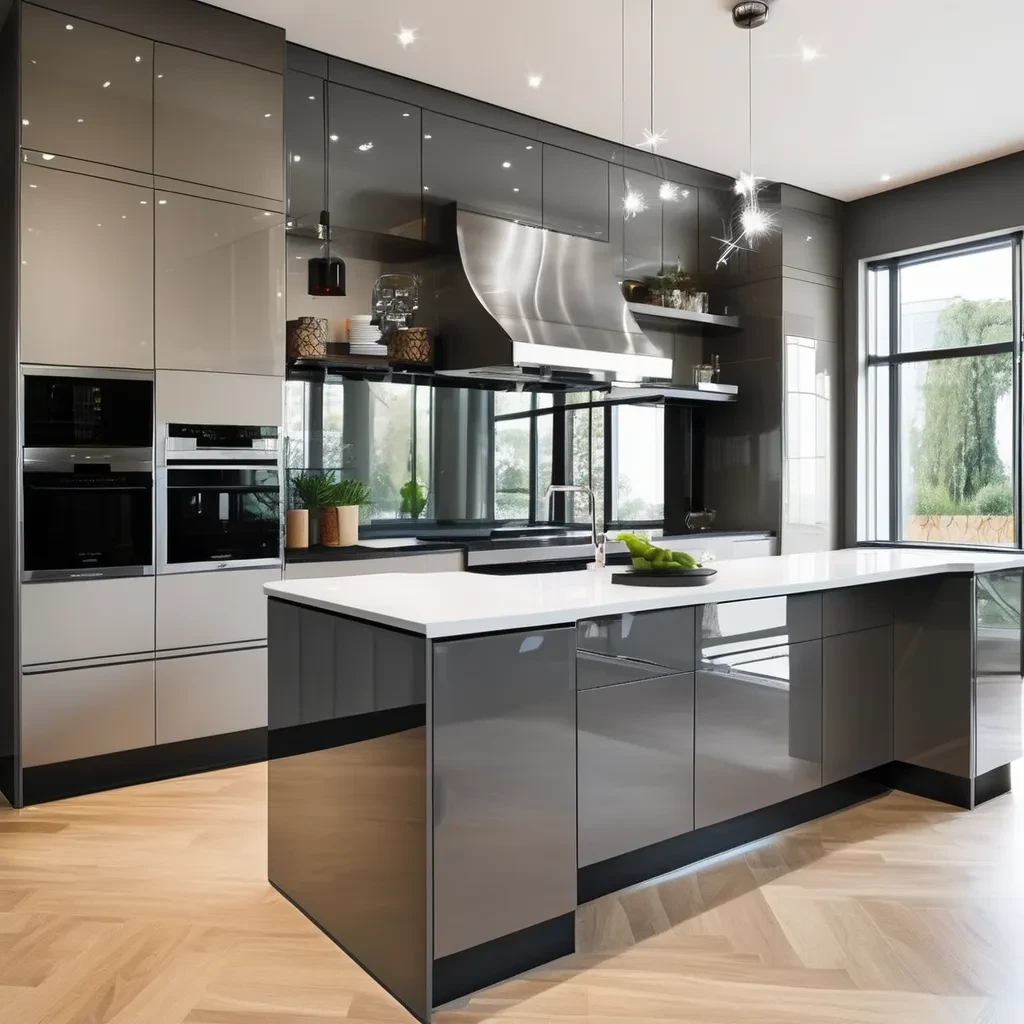Your cart is currently empty!
Comparison of Cabinet and Door Materials:
| Material | Advantages | Disadvantages |
| Solid Wood | Timeless beauty, durability, customizable (staining, painting, carving), repairable, increases home value. | Highest cost, susceptible to humidity changes (warping, cracking), requires regular maintenance, can be damaged by water if flooded or exposed for long periods of time.. |
| Melamine | Highly durable (scratch, stain, moisture resistant), easy to clean, wide variety of colors and patterns, cost-effective, stable. | Limited shape options (often square edges), can chip exposing the core, difficult to repair if damaged, substrate (often particleboard) can be water-damaged. |
| MDF (Medium-Density Fiberboard) | Smooth surface (excellent for painting), resistant to warping, cost-effective, consistent, good for intricate designs. | Heavier than plywood, susceptible to water damage if not properly sealed, dents more easily than wood, doesn’t hold screws as well as wood/plywood. |
| HDF (High-Density Fiberboard) | Very strong and durable (more so than MDF), smooth surface for finishing, good moisture resistance (better than MDF). | Most expensive of the engineered woods, very dense and heavy, can be harder to work with (requires specialized tools), can be prone to water damage if not sealed. |
Why Plywood is Used for “All Wood” Cabinet Boxes
While cabinet doors and face frames of “all wood” cabinets are often made from solid hardwood for their appearance and ability to be shaped, the boxes (sides, back, top, bottom) are almost universally constructed with plywood. There are several key reasons for this:
- Stability and Resistance to Warping: Solid wood expands and contracts significantly with changes in humidity and temperature. Large solid wood panels used for cabinet sides would be highly prone to warping, twisting, and cracking over time, compromising the structural integrity of the cabinet. Plywood, with its cross-layered construction, is significantly more stable and resists these movements, ensuring the cabinet box remains square and true.
- Strength and Load-Bearing Capacity: Plywood offers excellent strength and can bear significant weight without sagging or failing. This is crucial for supporting countertops, heavy items stored inside, and the weight of the doors themselves. The layered structure distributes stress effectively.
- Screw Holding Power: Plywood provides a much better grip for screws and other fasteners compared to particleboard or even MDF. This ensures that hinges, drawer slides, and the cabinet structure itself remain securely assembled over years of use.
- Moisture Resistance (Compared to other engineered woods): While not entirely waterproof, quality plywood is generally more resistant to moisture damage than particleboard or standard MDF. This is especially important in kitchens and bathrooms where humidity and spills are common.
- Cost-Effectiveness (Compared to solid wood panels): Using large, furniture-grade solid wood panels for cabinet boxes would be prohibitively expensive and less structurally sound than plywood. Plywood offers a balance of strength, stability, and reasonable cost.
Therefore, the construction of “all wood” cabinets typically represents a strategic use of materials: solid wood for the visible, detail-oriented parts, and plywood for the structural components that require stability, strength, and resistance to warping. This combination provides a durable and aesthetically pleasing cabinet that can withstand the rigors of daily use in your home.

